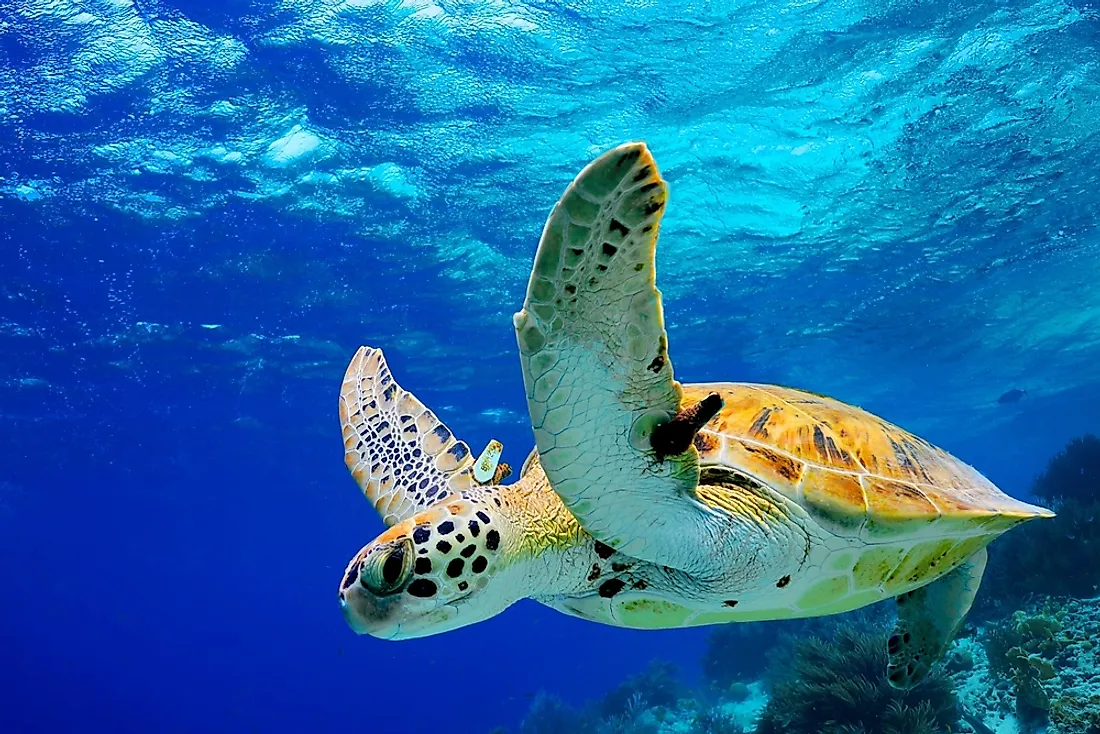Are Turtles Amphibians?

Amphibians are animals adapted to living both on land and in water. Though turtles live in or around water bodies, they are not amphibians but reptiles. A reptile is a terrestrial vertebrate covered by a scaly hard shell. Amphibians have a smooth scaleless covering that is permeable to water. Turtles are covered by a hard shell which is not permeable. Turtles like other reptiles molt their skins. The process is not once like in snakes but is done continuously in bits. They lay hard-shelled eggs therefore not a must they lay them in the water like amphibians.
Turtles belong to Phylum Chordata of the Reptilia class. Turtles are reptiles since they are four-legged vertebrates in addition to having cold-blooded metabolism and having scales covering their bodies. Breathing is aided by their lungs like in all other reptiles like the crocodiles, Snakes, lizards and the Tuatara. There are numerous turtle species which include the common snapping turtles, the spotted turtles, the Blanding’s turtle, painted turtles and wood turtles.
Anatomy And Morphology Of Turtles
The anatomy and morphology of a turtle depend on whether it spends most of its time on land or in the water. The adaptation of aquatic turtles makes them survive in water while the one that lives on land have specific adaptations. An aquatic turtle has their eyes near the top of the head to enable them to hide from predators while the rest of the body is submerged in water. Turtles have rigid mouths and jaws that enable them to cut and chew food. Turtles do not have teeth but their jaws are covered by horny ridges. The ridges slice through the prey for carnivorous turtles while the jaws of herbivorous turtles are covered with serrated edged ridges. Their tongue is small therefore a turtle cannot stick it out to catch food but it assists in swallowing. The largest recorded turtle is leatherback sea turtle at 6.6 feet long with a weight of 900 kilograms.
Turtles are covered by a shell that gives them protection from predators. The outer part of the shell is covered by hard horny scales commonly known as scutes. Most shells are dome-shaped. The aquatic turtles have a hard, flat and streamlined shell that adapts to diving and swimming. Exceptional cases are in the snapping and musk turtles which has a smaller cross-shaped plastron to enable them to have more efficiency while walking on the bottom of water bodies.
Turtles are able to retract their heads into the shell. Retraction function is an adaptation for feeding and protection. Turtles have four webbed limbs often with long claws that come hardy while clambering onto riverbanks. Exceptional cases are the sea turtles which have flippers instead of webbed feet. Sea turtles have limited mobility while on the land.
Ecology Of Turtles
Majority of the turtle species spends most of the time underwater. However, they must come to the surface to breathe at regular intervals. Some Species can spend life in the land while others spend most of their life in water hence have papillae that can dissolve oxygen from the surrounding water. A female turtle lays eggs on the dry land where they are left by the female to incubate by themselves. Eggs take 70- 120 days to hatch depending with species and temperature. Young one’s swims to water bodies and takes care of themselves.
Conservation Efforts
Turtles are an endangered species and unless conservation efforts are established, most of the species will become extinct. The threats include habitat destruction, consumption by human beings, medicinal value and pet trade.











